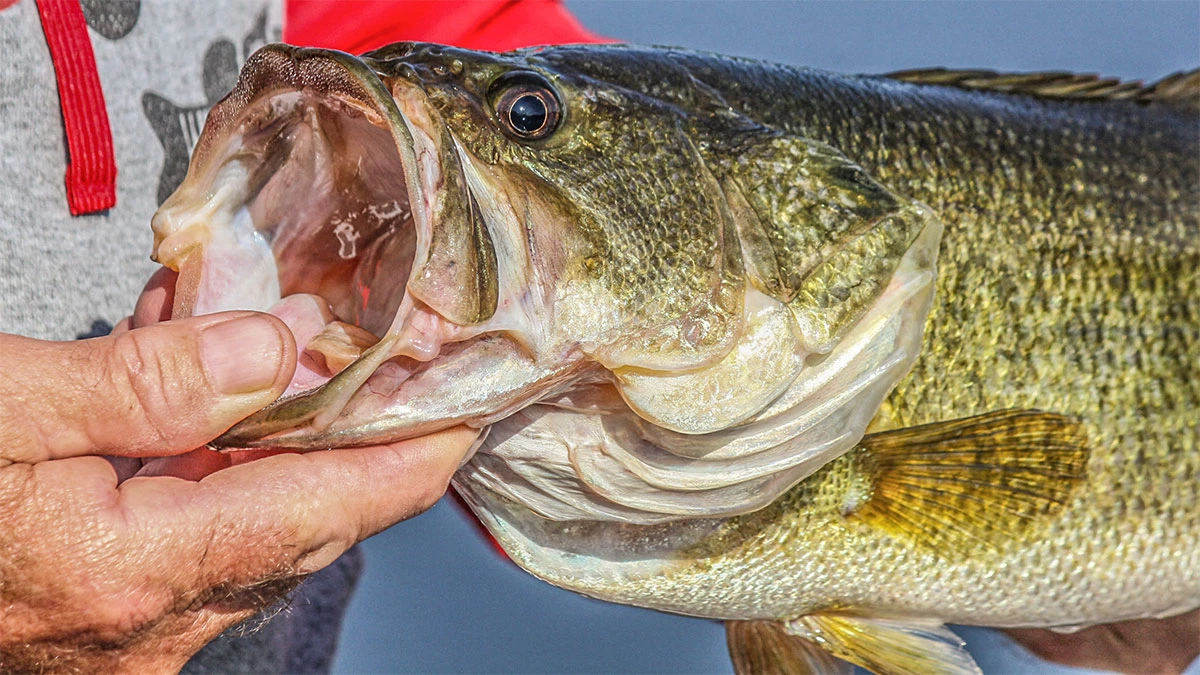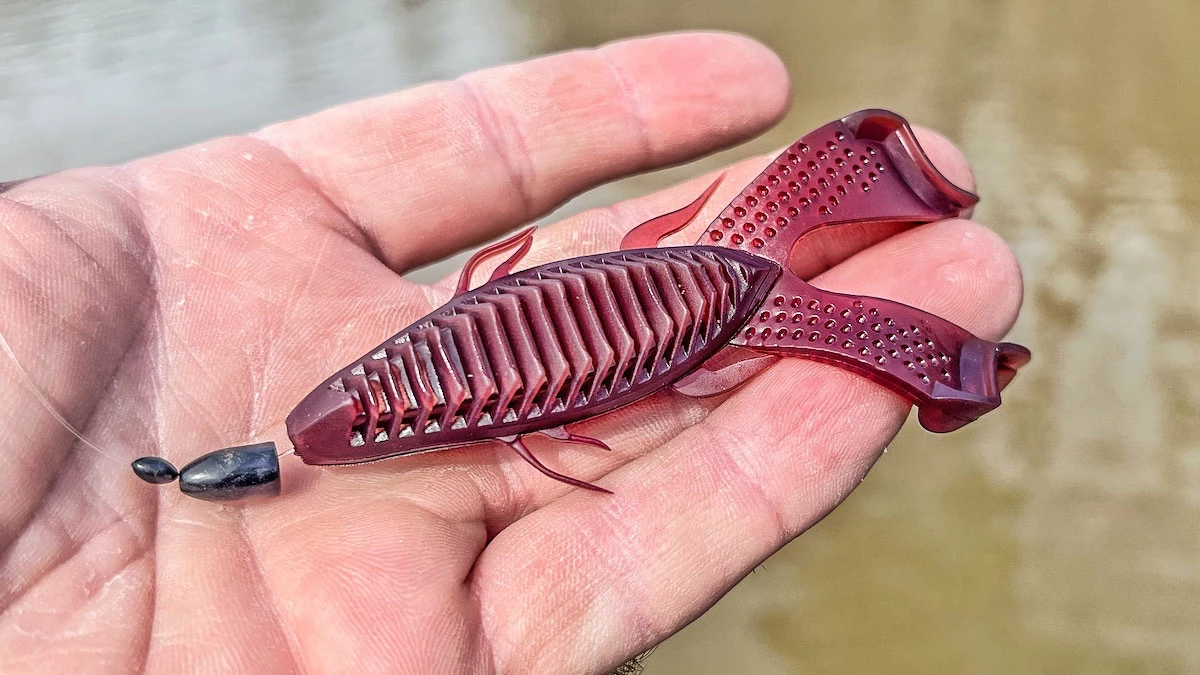Flipping is one of the best ways to catch fish during prespawn bass fishing, especially big ones. Bass often hold tighter to cover during the prespawn season than any other time of year. So it makes sense that taking your time and methodically picking apart every piece of cover in a shallow pocket or creek would be an effective way to get bit.
These bass are either posted up on this cover to ambush prey, as they feed up for the spawn. Or they may even be some of the first to go on bed, as the prespawn fades into the spawn. Either way, dropping a bait right in front of them is a great way to get a bite from a hungry bass or a defensive one.
With all of this in mind, let’s look at three ways to flip through the prespawn.
Flip and pitch a jig
Likely the most versatile of the three tactics we’ll touch on, flipping a jig is a great way to catch a big bass in the prespawn. A flipping jig can be fished around isolated cover like dock posts and stumps but it can also go pretty deep back into cover to pull fish out of fairly thick brush and vegetation.
Flipping the edge of submerged grass lines with a jig gives you the perfect approach to target bass that are transitioning from deeper water up into the shallows. If you happen to live far enough south that your vegetation is still standing after the winter, flipping a jig to isolated clumps of vegetation and over into the edges of bull reeds is again a great way to get a big bite. That’s how I caught one of the biggest bass of my life, a 9-pound, 1-ounce largemouth on Lake Okeechobee as it was moving up to spawn.
Then there’s woody cover that’s a little thicker, like buck brush, laydowns and shallow brush piles. A jig works great in all of these settings thanks to its weedguard, which helps it slip through some pretty sticky stuff. Oh dang, no pun intended, but I’m leaving it. In all these situations, go with a jig and trailer color that will be easy for the bass to see, landing somewhere around black and blue in mud and green pumpkin in clearer water.
Lightweight Texas rig
Though a jig does work well around isolated cover, sometimes it’s best to back off to a light Texas rig. A Texas rig, especially a lighter one around 1/4 to 3/8 ounces, has a a slower fall and a slimmer profile compared to a heftier jig with a bulky skirt. This can make a big difference when you get closer to the breaking point between the prespawn and the spawn.
Bass will often position themselves along the aforementioned grass lines and in shallow brush during the middle of the prespawn. But during those last few weeks, they really like to lock onto isolated cover like dock posts, stumps and small patches of vegetation. Some may even be fanning their beds already as a few others are still a day or two out.
The bass get a little more finicky by the day during that time of the prespawn and a big jig is sometimes a little off-putting. Instead, rigging up a light Texas rig with some kind of soft plastic creature bait or stick bait gives you a more subtle presentation that you can still affectively flip around this type of cover.
It’s best to try to visualize a bass on bed beside each piece of cover. And then fish slowly, just like you would if you were actively sight fishing for a bass on bed. This is what is known as blind bed fishing, and it’s a great way to capitalize on the tail end of the prespawn.
Punching
When the cover gets really thick, you’ll need to move to a heavy-weighted soft plastic and do what is referred to as punching. This cover is typically primarily overhead and most people often associate this style of fishing with matted grass. But you can also find junk mats consisting of leaves, pine straw and small sticks that form on lakes which experience heavy rains or have water levels that are rising during the spring due to a winter pool draw down.
Taking a heavy weight, typically an ounce or heavier and rigging it like a normal Texas rig with a soft plastic trailing behind, gives you a compact presentation that can slip through the thickest cover. Many anglers will use a snell knot to tie on a straight-shank hook with this presentation and though the need for the snell knot has been somewhat debunked over the last few years, this is still the most common practice.
Try to make the cleanest flip you can, so your bait will punch through the cover gracefully. The bass are often suspended just under the overhead cover and the smoother you can enter their domain, the less likely you are to spook them. Nine times out of 10, the bite comes on the initial fall. But it’s always worth a few yo-yos. On the rare occasion that you’re punching after a cold front, don’t be scared to bob your bait up and down several times.
Flipping through the prespawn is a great way to catch bass that are in the mid to late stages of this season. It gives you a way to precisely pick apart cover, where the bass will be. A jig is likely the most versatile, a light Texas rig the most subtle and then the big weight should come out when the other two can’t gain access. If you apply one or multiple of these three techniques to the shallow water cover near you this prespawn, you should experience success.















